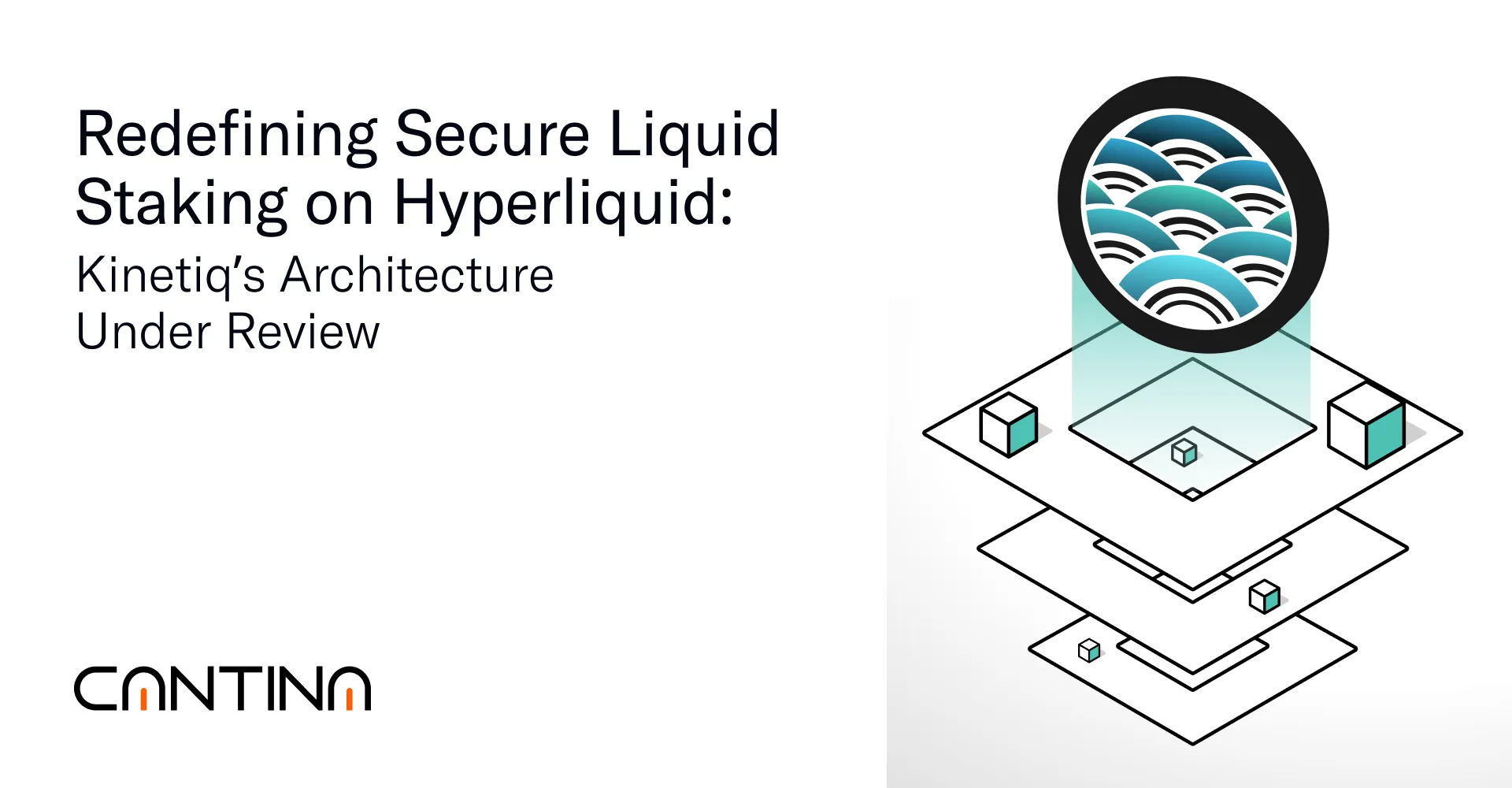Validator-Aware Staking as Infrastructure
Kinetiq is built as a coordination layer for validator performance, capital deployment, and liquidity-aware yield routing. Now, Kinetiq puts this infrastructure to adversarial testing through a public $5 million bug bounty program in collaboration with Cantina, inviting researchers to validate and challenge its assumptions under real-world conditions. It integrates natively with Hyperliquid, offering delegation that is performance-optimized, data-verified, and composable across DeFi. Every component is structured to serve a measurable trust model and verifiable execution path. Capital staked through Kinetiq supports network security while remaining accessible and usable across protocols.
Redefining the Trust Model
StakeHub is the delegation engine underpinning Kinetiq’s validator interaction. It scores and routes stake based on transparent performance metrics. These metrics include validator uptime, responsiveness, and stake. Scores are calculated onchain and refreshed using verifiable data inputs. Stake is reallocated based on those scores without manual intervention. The mechanism ensures continuous optimization without concentrating power in governance or multisigs. StakeHub builds a predictable validator set backed by observable behavior.
Capital That Moves With You
kHYPE is the token issued to stakers through Kinetiq. It is non-rebasing and accrues validator rewards through an increasing exchange rate. The token maintains compatibility with ERC-20 standards. This structure supports composability across structured products, vaults, liquidity markets, and lending environments. Validators continue to receive stake and performance rewards, while users maintain control of capital that can be actively deployed elsewhere. kHYPE offers measurable yield, deterministic exchange rate mechanics, and reliable behavior across integrations.
A Use Case: Structured Yield and Validator Integration
Organizations deploying capital into Hyperliquid often require both staking yield and DeFi composability. With Kinetiq, staked HYPE is converted into kHYPE, which accrues validator rewards automatically via an exchange rate mechanism. This token can be allocated to structured products or yield strategies without forfeiting staking rewards exposure.
Capital routed through kHYPE continues to participate in network security while compounding additional yield through integrated vaults or protocols. Validator scoring and delegation is handled through StakeHub. OracleAdapter ensures score data remains fresh and verifiable. StakingAccountant manages reward synchronization based on actual performance.
Participants retain full liquidity via AMM integrations and operate without manual validator management.
These architecture paths represent the live trust surface of the Kinetiq system. Validator rotation, capital deployment, and reward synchronization each define assumptions that can be verified and challenged. Rather than abstracting this surface, Kinetiq exposes it to formal adversarial review.
Designing for Enforceability
Each system component is independently observable and verifiable. StakeHub relies on validator scoring that is transparent and algorithmic. PauserRegistry enforces emergency roles and scoped permissions. OracleAdapter validates incoming data with delay bounds and injection resistance. StakingAccountant handles reward syncs through deterministic logic. ValidatorManager ensures delegation logic maintains exposure bounds and avoids invalid configurations. The system is built for auditability and stress testing at the capital, protocol, and delegation layers.
The Bug Bounty Program
Kinetiq invites researchers to challenge its architecture through a public $5 million bug bounty program. The program targets specific components that define the system's trust surface:
- StakeHub must maintain delegation correctness under adversarial score manipulation, unexpected validator behavior, and edge-case timing conditions.
- OracleAdapter ingests validator data and must enforce strict freshness guarantees, reject malformed inputs, and prevent propagation of corrupted scoring states.
- StakingAccountant controls validator reward syncing. It must preserve deterministic accounting across delegation shifts, validator churn, and syncing delays.
- PauserRegistry provides scoped emergency access. Its logic must prevent unauthorized execution, escalation misuse, or freeze bypass conditions.
- kHYPE Issuance and Redemption Logic governs staking representation. It must ensure accounting invariants hold across transfers, partial redemptions, delayed sync states, and during validator rotation cycles.
The review emphasizes adversarial modeling, correctness guarantees, and stress-testing assumptions that underpin validator coordination and reward logic. Participants are encouraged to interrogate both implementation safety and architectural completeness. Reports are evaluated based on severity and reproducibility.
Comparative Overview: Kinetiq vs Traditional Staking

Defining the Next Standard for Validator Coordination
Kinetiq is positioned as a staking layer for both retail and institutional flows, collateral systems, yield strategy orchestration, and more. Integrations with Kinetiq’s Earn vault, AMMs, yield-trading platforms, money markets, and risk-isolated iHYPE pathways reflect this direction. The system’s architecture supports ongoing governance extension, performance simulation, and offchain analytics inclusion. All trust surfaces are intended to remain observable and enforceable. StakeHub will continue expanding validator scoring criteria and delegation transparency. Protocols deploying on Hyperliquid can integrate staking behavior natively through kHYPE, without managing validator risk directly.
Kinetiq is infrastructure that prioritizes correctness, visibility, and composability.
If your organization is designing capital coordination systems, validator infrastructure, or staking-layer primitives, we encourage you to consider structured security reviews that match the depth of your architecture. The Kinetiq bug bounty represents one possible model: composable, high-signal, and aligned with production-ready deployment.
Design Security as Infrastructure
To explore how Cantina can help you launch a bug bounty program with similar rigor and reach, contact us directly. We collaborate with protocols that treat security not as an afterthought, but as a system-level design commitment.




